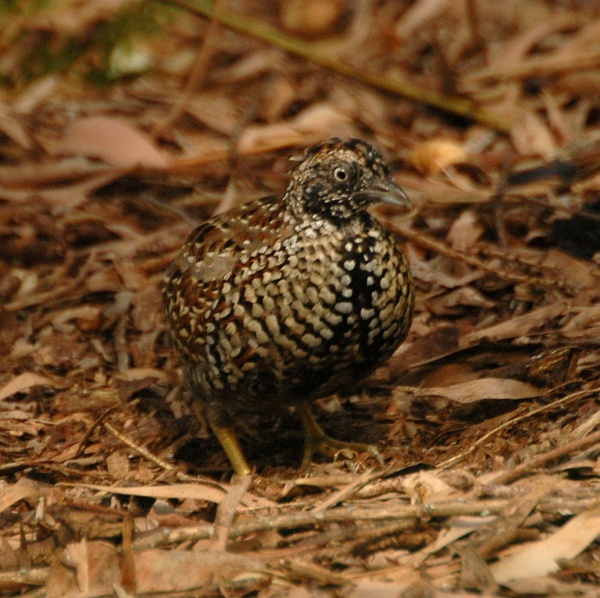Facts About Black-breasted buttonquail
The black-breasted buttonquail is a rare and fascinating bird native to eastern Australia, primarily inhabiting rainforests. This bird is notable for its striking plumage, which features a combination of black, rufous, and pale brown feathers adorned with white spots and stripes. Interestingly, the female is not only larger but also more colorful than the male. Reaching up to 20 cm in length, it showcases a distinctive black face with delicate white markings. Unfortunately, the black-breasted buttonquail is considered near threatened according to the IUCN Red List.
First described by John Gould in 1837 as Hemipodius melanogaster, the bird was later renamed Turnix melanogaster. Recent molecular studies have placed it in the Charadriiformes order, rather than Gruiformes, and the International Ornithologists' Union (IOU) officially names it the "black-breasted buttonquail."
The species' habitat ranges from central Queensland to northeastern New South Wales, favoring areas with moderate rainfall. It thrives in dry rainforests, bottle tree scrub, lantana thickets, and mature hoop pine plantations. In terms of breeding behavior, the female mates with multiple males, who then take on the responsibility of incubating the eggs. Their nests are simple, shallow depressions lined with vegetation.
Regarding diet, the black-breasted buttonquail forages on the ground, searching for invertebrates hidden in dense leaf litter. However, its population is declining due to habitat loss and fragmentation, with estimates suggesting as few as 2,500 breeding individuals remain. The bird is listed as vulnerable in Queensland and near threatened on the IUCN Red List. Conservation efforts are crucial to protect this unique species and its habitat from further decline.
